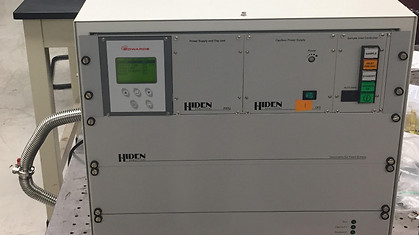
A lithium-air battery with long cycle life and low overpotentials! Mo3P nanoparticles with a kinetically stable oxide overlayer exhibit remarkable ORR/OER activities near thermodynamic potentials in non‐aqueous media. Using this catalyst alongside TEMPO and DBBQ redox mediators in a lithium–air battery favors the solution‐based mechanism for epitaxial growth of Li2O2 at the lowest overpotentials, the effects of which are addressed through directed experimental efforts in electrochemical characterization coupled with a computational approach. These findings are published in Advanced Materials.
Burning fossil fuels for energy gives carbon dioxide as a byproduct. In contrast, burning hydrogen gives only water. As economies move to minimize their carbon footprint, new technologies for hydrogen synthesis are crucial. In this work we discovered a platinum-like activity using trimolybdenum phosphide nanoparticles for hydrogen evolution reaction. The key finding is that the unique structure of these catalysts provides high-density sites at the surface, with outstanding intrinsic electronic properties that are crucial for every electrocatalytic reaction. To find out more about trimolybdenum phosphide nanoparticle catalysts, please visit the Advanced Energy Materials homepage.
Using solar power, carbon dioxide can be recycled from the atmosphere into useful fuels allowing for a renewable, carbon-neutral fuel production cycle. However, most carbon dioxide reduction processes involve using expensive and scarce materials. We have devised a way to reduce carbon dioxide into carbon monoxide in a continuous solar-powered electrochemical process using inexpensive and abundant materials. The solar-to-fuel and catalytic conversion efficiencies for the process are 23 percent and 83 percent, respectively. By comparison, a maximum efficiency of approximately 15 percent is reported using a different catalyst. These findings were recently published in Advanced Energy Materials.

Lithium-air battery is known as a potential alternative to conventional lithium-ion battery due to its greater energy density. However, it has many technical challenges to be practically applicable. We, for the first time, developed a state-of-the-art differential electrochemical mass spectroscopy apparatus to measure in-situ formation and decomposition of the Lithium superoxide during charging and discharge of this new generation battery technology. Unlike lithium peroxide, lithium superoxide easily breaks down again into lithium and oxygen, offering the possibility of a battery with high energy efficiency and good cycle life.
The artificial leaf has been mostly used for hydrogen generation. However, using this concept for CO2 reduction reaction is chemically more complex. Recently, Asadi et al. showed that nano-structured tungsten diselenide catalyst exhibits outstanding activity for conversion of CO2 to CO. They applied this catalyst in a light harvesting artificial leaf platform that concurrently oxidized water in the absence of any external potential.

